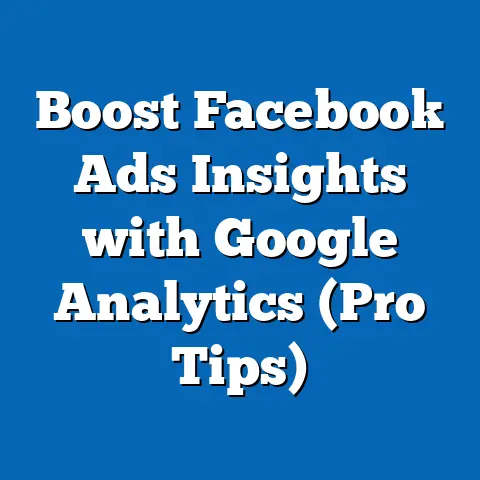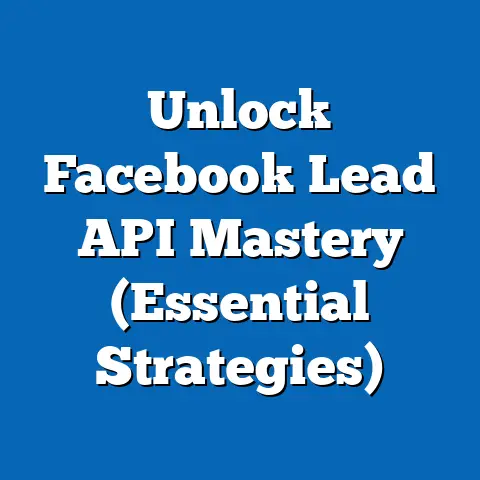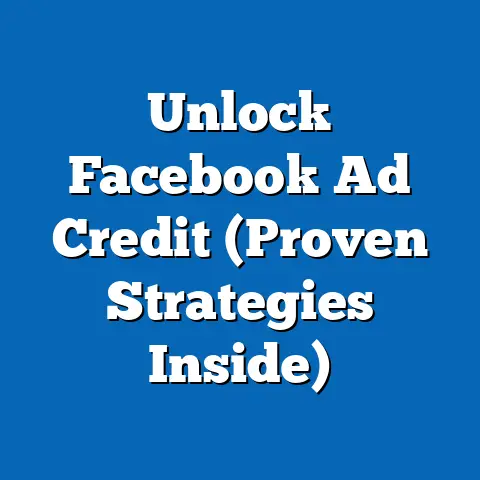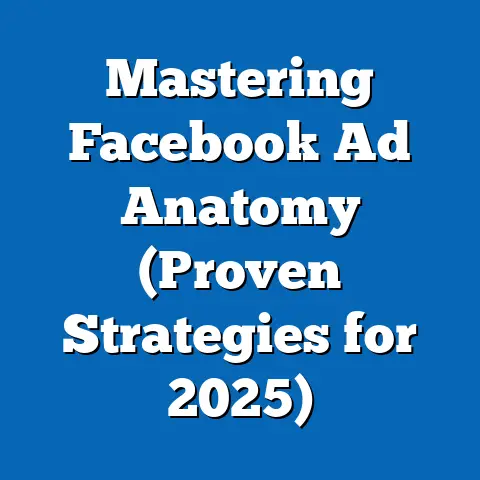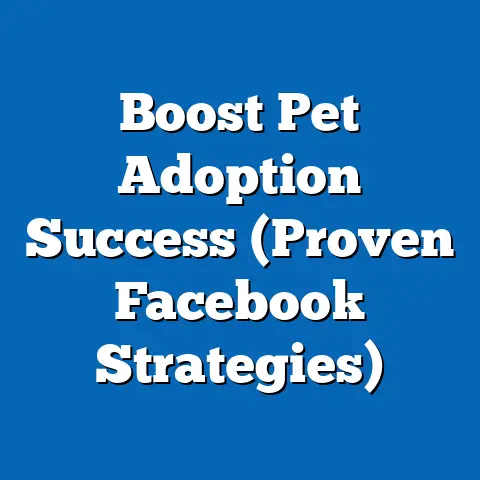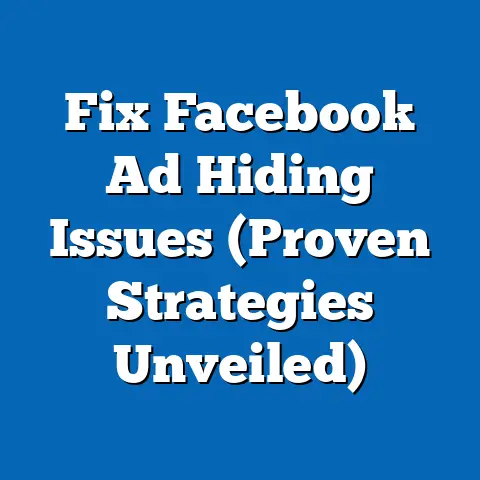Do Emojis Enhance Facebook Ads? (Unlock the Secret)
I still remember the first time I saw an emoji in a Facebook ad. I was scrolling through my feed, mindlessly absorbing information, when a bright yellow smiley face caught my eye. It was an ad for a local coffee shop, and the simple addition of that emoji made the ad feel so much more personal and inviting. Before that, ads were just…ads. But this one felt different. It felt like a friend was recommending a new place to grab a latte. It made me stop scrolling and actually pay attention.
In today’s crowded digital landscape, where we’re bombarded with countless ads every day, it’s getting harder and harder to stand out. So, the question becomes: can emojis truly enhance Facebook ads and help them cut through the noise? Let’s dive into the world of emojis and explore their potential to transform your Facebook advertising strategy.
Section 1: The Evolution of Communication
Communication has come a long way from the formal letters of the past. Think about it: Hieroglyphics, ancient drawings, and even the evolution of language itself, it’s all about conveying information in the most efficient and impactful way. Now, consider the digital age. We’ve moved from formal emails to instant messaging, where brevity and visual cues reign supreme.
Emojis are a natural extension of this trend. They’re a visual language that allows us to express emotions, convey tone, and add personality to our messages. They transcend cultural barriers, making them a powerful tool for global communication. According to Statista, over 90% of online users use emojis in their digital communications. This staggering number underscores the widespread adoption of emojis as a primary means of expression.
Marketers have been quick to recognize the potential of emojis. A recent study by HubSpot revealed that tweets with emojis receive 25.4% more engagement than those without. This demonstrates that emojis aren’t just for personal conversations; they can significantly boost marketing performance.
Takeaway: Emojis are a vital part of modern communication, and their use in marketing is steadily increasing.
Section 2: The Psychology Behind Emojis
The effectiveness of emojis goes beyond just being visually appealing. They tap into fundamental psychological principles that influence consumer behavior. Here’s a deeper look:
- Emotional Connection: Emojis are inherently emotional. They allow us to express feelings that words sometimes can’t. By using emojis in your ads, you’re creating an emotional connection with your audience, making your message more memorable and relatable.
- Relatability: Emojis can make your brand feel more human and approachable. They break down the barrier between company and consumer, fostering a sense of connection. A simple smiley face can make your ad feel less like a sales pitch and more like a friendly conversation.
- Engagement: Emojis are attention-grabbing. They stand out in a sea of text, making your ad more likely to be noticed. They also encourage interaction. People are more likely to react to an ad that feels fun and engaging, and emojis can help create that feeling.
Research supports these observations. A study published in the Journal of Consumer Psychology found that emojis can positively influence brand perception, making brands seem more likable and trustworthy. Another study by Mention showed that using emojis in social media posts can increase engagement by up to 48%.
Emotions play a crucial role in decision-making. Neuromarketing studies have shown that emotional responses often override rational thought processes when we’re making purchasing decisions. Emojis, by evoking emotions, can subtly influence these decisions, making your ad more persuasive.
Takeaway: Emojis trigger emotional responses that can significantly impact consumer behavior, influencing brand perception and driving engagement.
Section 3: Case Studies of Successful Facebook Ads Using Emojis
Let’s examine some real-world examples of how emojis have been used effectively in Facebook ads:
- Domino’s Pizza: Domino’s famously allowed customers to order pizza simply by tweeting a pizza emoji. This innovative campaign generated massive buzz and demonstrated the power of emojis in driving direct sales. While this wasn’t a Facebook ad, it illustrates how emojis can be integrated into the entire customer journey.
- Learning Point: Embrace creative uses of emojis that align with your brand and make ordering easy for customers.
- Headspace (Meditation App): Headspace often uses emojis like 🙏 (folded hands) and 🧘 (person in lotus position) in their Facebook ads. These emojis instantly convey the app’s purpose – meditation and mindfulness – in a visually appealing way.
- Learning Point: Use emojis that are directly relevant to your product or service to quickly communicate your value proposition.
- ASOS (Online Retailer): ASOS frequently incorporates emojis like 🛍️ (shopping bag) and ✨ (sparkles) in their ads promoting sales and new arrivals. These emojis add a touch of excitement and visually highlight the key message.
- Learning Point: Emojis can be used to emphasize key selling points and create a sense of urgency or excitement around your offers.
- Airbnb: Airbnb often uses location-based emojis like 🌴 (palm tree) or 🏔️ (snow-capped mountain) in their ads targeting specific destinations. This helps users instantly visualize the travel experience and makes the ads more personalized.
- Learning Point: Tailor your emoji usage to match the target audience and the specific context of your ad to increase relevance.
- Netflix: Netflix uses emojis cleverly in their ads to hint at the genre or mood of a show. For example, they might use 🔪 (knife) for a thriller or 😂 (face with tears of joy) for a comedy.
- Learning Point: Use emojis to create intrigue and pique users’ curiosity about your content.
- Learning Point: Embrace creative uses of emojis that align with your brand and make ordering easy for customers.
- Learning Point: Use emojis that are directly relevant to your product or service to quickly communicate your value proposition.
- Learning Point: Emojis can be used to emphasize key selling points and create a sense of urgency or excitement around your offers.
- Learning Point: Tailor your emoji usage to match the target audience and the specific context of your ad to increase relevance.
- Learning Point: Use emojis to create intrigue and pique users’ curiosity about your content.
These case studies highlight the versatility of emojis and their ability to enhance different types of Facebook ads. The key is to use them strategically and in a way that aligns with your brand and target audience.
Takeaway: Successful Facebook ads use emojis strategically to convey information quickly, create emotional connections, and drive engagement.
Section 4: Best Practices for Using Emojis in Facebook Ads
Now that we’ve seen some successful examples, let’s outline some best practices for using emojis effectively in your own Facebook ads:
- Know Your Audience: The most important factor is understanding your target audience. What emojis do they use in their own communications? What emojis resonate with their values and interests? Research your audience and choose emojis that they’ll understand and appreciate.
- Relevance is Key: Choose emojis that are relevant to your product, service, or message. Don’t just use emojis for the sake of using them. They should add value and enhance the overall message.
- Balance is Essential: Don’t overuse emojis. Too many emojis can be distracting and make your ad look unprofessional. Use them sparingly and strategically to highlight key points.
- Context Matters: Consider the context of your ad. What is the overall tone and message? Choose emojis that complement that tone and message. Avoid using emojis that are inappropriate or could be misinterpreted.
- Test and Optimize: As with any element of your Facebook ads, you should test different emoji combinations and track their performance. Use A/B testing to see which emojis resonate best with your audience and drive the most engagement.
- Accessibility Considerations: Remember that some users may not be able to see emojis properly (e.g., due to older devices or screen readers). Always ensure that your message makes sense even without the emojis.
- Stay Updated: Emojis evolve, and new ones are constantly being added. Stay up-to-date on the latest emoji trends and meanings to ensure that you’re using them correctly.
Takeaway: Effective emoji use requires careful planning, audience understanding, and ongoing testing to ensure they enhance rather than detract from your message.
Section 5: Potential Pitfalls of Using Emojis
While emojis can be powerful, they also come with potential pitfalls. Here are some common mistakes to avoid:
- Misinterpretation: Emojis can be interpreted differently by different people, especially across cultures. A seemingly innocent emoji might have a completely different meaning in another country. Always research the potential interpretations of emojis before using them.
- Offensiveness: Some emojis can be offensive or inappropriate, depending on the context. Avoid using emojis that could be seen as insensitive, discriminatory, or sexually suggestive.
- Distraction: Too many emojis can be distracting and make your ad look cluttered and unprofessional. Use them sparingly and strategically to avoid overwhelming your audience.
- Brand Inconsistency: Make sure that your emoji usage aligns with your brand’s overall tone and personality. If your brand is known for being serious and professional, using too many emojis might feel out of character.
- Technical Issues: As mentioned earlier, some users may not be able to see emojis properly, which can lead to confusion. Always ensure that your message makes sense even without the emojis.
I’ve seen brands use emojis that were completely out of touch with their audience, leading to negative reactions and even public backlash. It’s crucial to be mindful of these potential pitfalls and to use emojis responsibly.
Takeaway: Emojis can be misinterpreted or used inappropriately, leading to negative consequences. Careful consideration and cultural awareness are essential.
Conclusion
Emojis are a powerful tool that can enhance your Facebook ads and help you connect with your audience on a deeper level. By understanding the psychology behind emojis, following best practices, and avoiding potential pitfalls, you can unlock their full potential and drive better results from your advertising campaigns.
Remember that coffee shop ad that caught my eye years ago? It wasn’t just the emoji that made it effective. It was the combination of the emoji, the relevant message, and the overall feeling of authenticity. When you use emojis strategically and in a way that aligns with your brand and audience, you can create ads that are not only visually appealing but also emotionally engaging and highly effective.
Now, I encourage you to experiment with emojis in your own Facebook ads. See what works for your audience and track your results. The world of emojis is constantly evolving, so stay curious, stay creative, and keep testing!
Call to Action:
Have you had success using emojis in your Facebook ads? Share your experiences and tips in the comments below! Or, if you’re new to emojis, try incorporating them into your next campaign and let us know how it goes. Let’s learn from each other and unlock the secrets of emoji marketing together!

